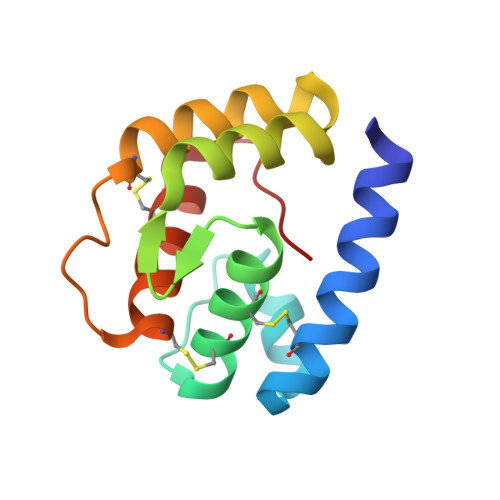A novel mechanism of ligand binding and release in the odorant binding protein 20 from the malaria mosquito Anopheles gambiae.
Ziemba, B.P., Murphy, E.J., Edlin, H.T., Jones, D.N.(2013) Protein Sci 22: 11-21
- PubMed: 23081820
- DOI: https://doi.org/10.1002/pro.2179
- Primary Citation of Related Structures:
3V2L, 3VB1, 4F7F - PubMed Abstract:
Anopheles gambiae mosquitoes that transmit malaria are attracted to humans by the odor molecules that emanate from skin and sweat. Odorant binding proteins (OBPs) are the first component of the olfactory apparatus to interact with odorant molecules, and so present potential targets for preventing transmission of malaria by disrupting the normal olfactory responses of the insect. AgamOBP20 is one of a limited subset of OBPs that it is preferentially expressed in female mosquitoes and its expression is regulated by blood feeding and by the day/night light cycles that correlate with blood-feeding behavior. Analysis of AgamOBP20 in solution reveals that the apo-protein exhibits significant conformational heterogeneity but the binding of odorant molecules results in a significant conformational change, which is accompanied by a reduction in the conformational flexibility present in the protein. Crystal structures of the free and bound states reveal a novel pathway for entrance and exit of odorant molecules into the central-binding pocket, and that the conformational changes associated with ligand binding are a result of rigid body domain motions in α-helices 1, 4, and 5, which act as lids to the binding pocket. These structures provide new insights into the specific residues involved in the conformational adaptation to different odorants and have important implications in the selection and development of reagents targeted at disrupting normal OBP function.
Organizational Affiliation:
Department of Pharmacology, University of Colorado School of Medicine, Aurora, Colorado 80045, USA.
















